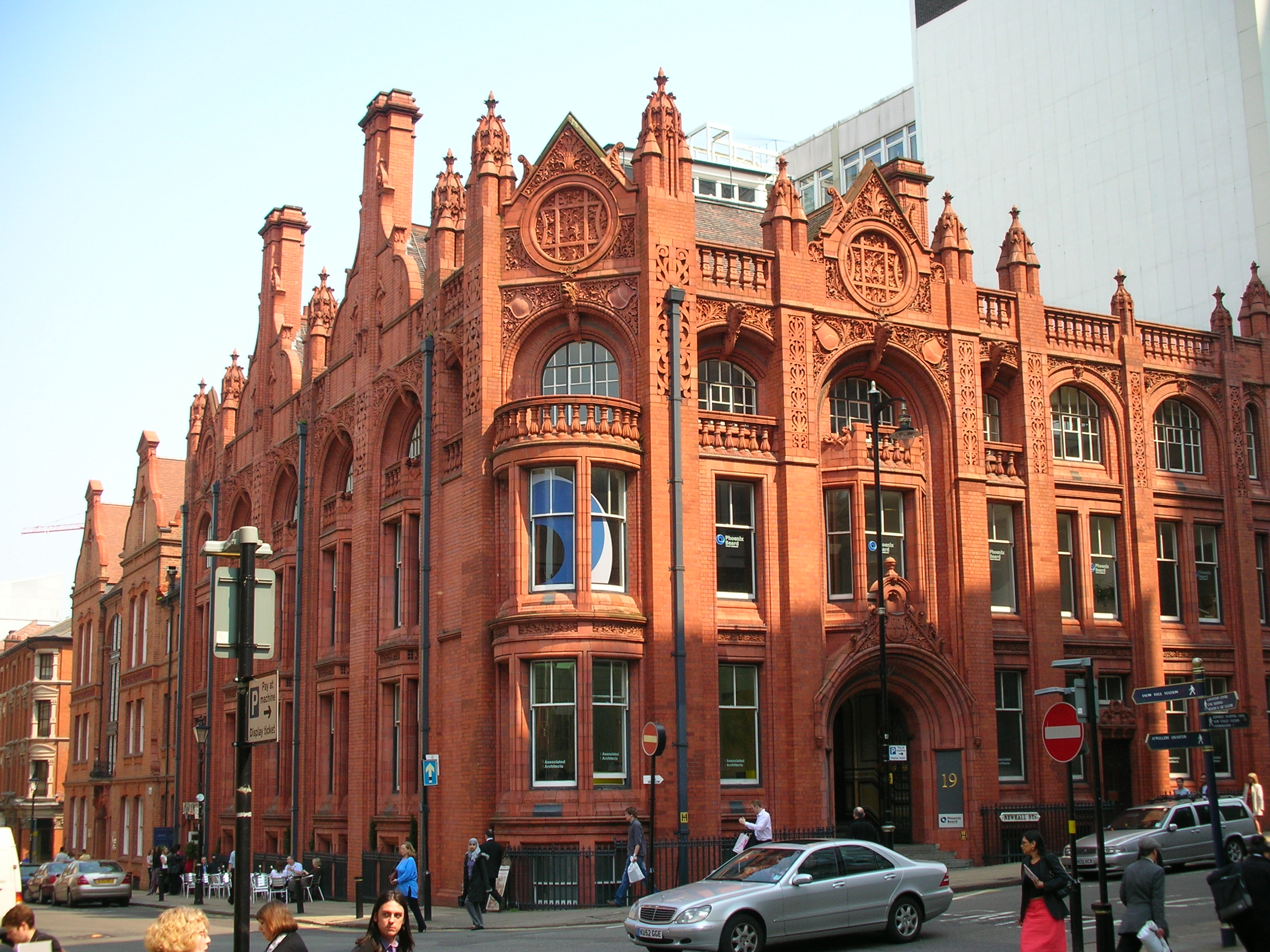|
Terra Cotta (other)
Terra Cotta (or terracotta) is a clay-based ceramic material, and objects made in it. Terra Cotta or terracotta may also refer to: Places *Terra Cotta, California, a small former mining town in the USA *Terra Cotta, Illinois, an unincorporated community in the USA *Terra Cotta, a community in Caledon, Ontario, Canada *Terra Cotta, a 1990s heavy metal band from Cambridge, Ontario, Canada Other uses *Terra cotta (color), a reddish-brown colour * Terracotta, Inc., a software company See also *Terracotta Army, ancient Chinese funerary warrior and horse statues *Architectural terracotta *Glazed architectural terra-cotta Glazed architectural terra cotta is a ceramic masonry building material used as a decorative skin. It featured widely in the 'terracotta revival' from the 1880s until the 1930s. It was used in the UK, United States, Canada and Australia and ... * Terracotta roof tiles {{disambig ... [...More Info...] [...Related Items...] OR: [Wikipedia] [Google] [Baidu] |
Terra Cotta
Terracotta, also known as terra cotta or terra-cotta (; ; ), is a clay-based Vitrification#Ceramics, non-vitreous ceramicOED, "Terracotta""Terracotta" MFA Boston, "Cameo" database fired at relatively low temperatures. It is therefore a term used for earthenware objects of certain types, as set out below. Usage and definitions of the term vary, such as: *In art, pottery, applied art, and craft, "terracotta" is a term often used for red-coloured earthenware sculptures or functional articles such as flower pots, water and waste water pipes, and tableware. *In archaeology and art history, "terracotta" is often used to describe objects such as figurines and loom weights not made on a potter's wheel, with vessels and other objects made on a wheel from the same material referred to as earthenware; the choice of term depends on the type of object rather than the material or shaping technique. *Terracotta is also used to refer to the natural Terra cotta (color), brownish-orange color of ... [...More Info...] [...Related Items...] OR: [Wikipedia] [Google] [Baidu] |
Terra Cotta, California
Terra Cotta is a former mining town in Riverside County. It was established in 1887, in the Warm Springs Valley northwest of the town of Lake Elsinore, and later incorporated into the City of Lake Elsinore. Coal, along with clay deposits, was found on the site by John D. Huff in the late 1880s, and the Southern California Coal and Clay Company was formed to mine them. The town site of Terra Cotta was laid out and was given a post office on October 26, 1887. However, in May 1893, its post office was closed and moved to Lake Elsinore. A plant for the manufacture of sewer and water pipes was built using the coal to fire ceramic pipes in the four kilns. The finished product had to be shipped by wagon six miles through Lake Elsinore to the La Laguna rail station at the mouth of Railroad Canyon until 1896, when a spur line was built through Lake Elsinore and Terra Cotta to the new clay deposits in Alberhill. The coal mined was also used locally as fuel for the stamping mill at the Goo ... [...More Info...] [...Related Items...] OR: [Wikipedia] [Google] [Baidu] |
Terra Cotta, Illinois
Terra Cotta is an Unincorporated area#United States, unincorporated community in McHenry County, Illinois, McHenry County, in the U.S. state of Illinois. History A post office called Terra Cotta was established in 1886, and remained in operation until it was discontinued in 1927. The community was named after a local terracotta pottery works. References Unincorporated communities in McHenry County, Illinois Unincorporated communities in Illinois {{McHenryCountyIL-geo-stub ... [...More Info...] [...Related Items...] OR: [Wikipedia] [Google] [Baidu] |
Caledon, Ontario
Caledon (; 2021 Canadian census, 2021 population 76,581) is a town (Ontario), town in the Regional Municipality of Peel in the Greater Toronto Area of Ontario, Canada. The name comes from a shortened form of Caledonia, the Roman name for what is now Scotland. Caledon is primarily rural with a number of Hamlet (place), hamlets and small villages, but also contains the larger community of Bolton, Ontario, Bolton (population 26,795) in its southeastern quadrant, adjacent to York Region. Some spillover urbanization also occurs in the south bordering the City of Brampton. Caledon is the northernmost of three municipalities of Peel Region. The town is northwest of Brampton. According to Statistics Canada the land area is and, according to the city the area is , which makes Caledon the largest municipality by area in the Greater Toronto Area. History By 1869, Belfountain was a village with a population of 100 in the Caledon Township, Ontario, Township of Caledon, Peel County, Ontario, ... [...More Info...] [...Related Items...] OR: [Wikipedia] [Google] [Baidu] |
Heavy Metal Music
Heavy metal (or simply metal) is a Music genre, genre of rock music that developed in the late 1960s and early 1970s, largely in the United Kingdom and United States. With roots in blues rock, psychedelic rock and acid rock, heavy metal bands developed a thick, monumental sound characterized by distortion (music), distorted guitars, extended guitar solos, emphatic Beat (music), beats and loudness. In 1968, three of the genre's most famous pioneers – British bands Led Zeppelin, Black Sabbath and Deep Purple – were founded. Though they came to attract wide audiences, they were often derided by critics. Several American bands modified heavy metal into more accessible forms during the 1970s: the raw, sleazy sound and shock rock of Alice Cooper and Kiss (band), Kiss; the blues-rooted rock of Aerosmith; and the flashy guitar leads and party rock of Van Halen. During the mid-1970s, Judas Priest helped spur the genre's evolution by discarding much of its blues influence,Walser (1 ... [...More Info...] [...Related Items...] OR: [Wikipedia] [Google] [Baidu] |
Cambridge, Ontario
Cambridge is a city in the Regional Municipality of Waterloo, Ontario, Canada, located at the confluence of the Grand River (Ontario), Grand and Speed River, Speed rivers, in the central part of the Ontario Peninsula. The city had a population of 138,479 as of the 2021 Canadian census, 2021 census. Along with Kitchener, Ontario, Kitchener and Waterloo, Ontario, Waterloo, Cambridge is one of the three core cities of Canada's List of census metropolitan areas and agglomerations in Canada, tenth-largest metropolitan area. Cambridge was formed in 1973 by the amalgamation (politics), amalgamation of Galt, Ontario, Galt, Preston, Ontario, Preston, Hespeler, Ontario, Hespeler, the settlement of Blair, North Dumfries, as well as east and west Galt. The former Galt covers the largest portion of Cambridge, making up the southern half of the city, while Preston and Blair cover the western side. Hespeler makes up the most northeastern section of Cambridge. Historical information and records ... [...More Info...] [...Related Items...] OR: [Wikipedia] [Google] [Baidu] |
Terra Cotta (color)
Salmon is a warm color ranging from light orange to pink, named after the color of salmon flesh. The first recorded use of ''salmon'' as a color name in English was in 1776. The actual color of salmon flesh varies from almost white to light orange, depending on their levels of the carotenoid astaxanthin, which in turn is the result of the richness of the fish's diet of krill and shrimp; salmon raised on fish farms are given non-synthetic or artificial coloring in their food. The flesh of Atlantic salmon (''Salmo salar'') is lighter and oranger than that of the various Pacific salmon species (from the genus ''Oncorhynchus''). __TOC__ Variations of salmon Salmon pink (or ''salmon'' in Crayola crayons) was introduced by Crayola in 1949. See the List of Crayola crayon colors. Light salmon has a yellower hue and less saturation when compared to ''salmon''. Dark salmon resembles the color ''light salmon'', but is grayer. Like the web colors shown above, it is used ... [...More Info...] [...Related Items...] OR: [Wikipedia] [Google] [Baidu] |
Terracotta Army
The Terracotta Army is a collection of terracotta sculptures depicting the armies of Qin Shi Huang, the first emperor of China. It is a form of funerary art buried with the emperor in 210–209 BCE with the purpose of protecting him in his afterlife. The figures, dating from approximately the late 200s BCE, were discovered in 1974 by local farmers in Lintong District, Lintong County, outside Xi'an, Shaanxi, China. The figures vary in height according to their rank, the tallest being the generals. The figures include warriors, Chariot (Ancient China), chariots and horses. Estimates from 2007 were that the three pits containing the Terracotta Army hold more than 8,000 soldiers, 130 chariots with 520 horses, and 150 cavalry horses, the majority of which remain ''in situ'' in the pits near Mausoleum of Qin Shi Huang, Qin Shi Huang's mausoleum. Other, non-military terracotta figures have since been found in other pits, including those of officials, acrobats, strongmen, and musicians ... [...More Info...] [...Related Items...] OR: [Wikipedia] [Google] [Baidu] |
Architectural Terracotta
Architectural terracotta refers to a fired mixture of clay and water that can be used in a non-structural, semi-structural, or structural capacity on the exterior or interior of a building. Terracotta is an ancient building material that translates from Latin as "wikt:terracotta, baked earth". Some architectural terracotta is stronger than stoneware. It can be unglazed, painted, slip glazed, or Glazed architectural terra-cotta, glazed. Usually solid in earlier uses, in most cases from the 19th century onwards each piece of terracotta is composed of a hollow clay web enclosing a void space or cell. The cell can be installed in compression with Mortar (masonry), mortar or hung with metal anchors; such cells are often partially backfilled with mortar. Terracotta can be used together with brick, for ornamental areas; if the source of the clay is the same they can be made to harmonize, or if different to contrast. It is often a cladding over a different structural material. Hist ... [...More Info...] [...Related Items...] OR: [Wikipedia] [Google] [Baidu] |
Glazed Architectural Terra-cotta
Glazed architectural terra cotta is a ceramic masonry building material used as a decorative skin. It featured widely in the 'terracotta revival' from the 1880s until the 1930s. It was used in the UK, United States, Canada and Australia and is still one of the most common building materials found in U.S. urban environments. It is the Ceramic glaze, glazed version of architectural terracotta; the material in both its glazed and unglazed versions is sturdy and relatively inexpensive, and can be molded into richly ornamented detail. Glazed terra-cotta played a significant role in architectural styles such as the Chicago school (architecture), Chicago School and Beaux-Arts architecture. History The material, also known in Great Britain as faience and sometimes referred to as "architectural ceramics" in the USA was closely associated with the work of Cass Gilbert, Louis Sullivan, and Daniel H. Burnham, among other architects. Buildings incorporating glazed terra-cotta include the ... [...More Info...] [...Related Items...] OR: [Wikipedia] [Google] [Baidu] |






